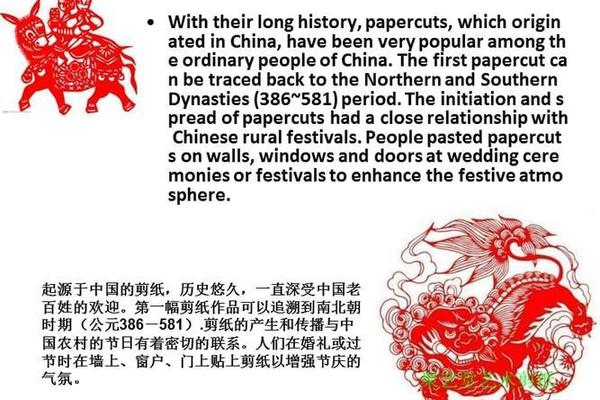Chinese Paper-Cutting as Intangible Cultural Heritage: An English Introduction
Paper-cutting (剪纸, jiǎnzhǐ) is one of China's oldest and most iconic folk arts, deeply rooted in the nation's cultural traditions. Recognized by UNESCO in 2009 as an Intangible Cultural Heritage of Humanity, it embodies both artistic creativity and the spiritual values of Chinese society. Below is a comprehensive overview of its cultural significance, techniques, and contemporary relevance.

1. Historical Origins and Cultural Symbolism
Chinese paper-cutting dates back over 1,500 years, with archaeological evidence tracing its origins to the Han Dynasty (206 BCE–220 CE). Initially crafted from materials like silk and leather before the invention of paper, it evolved into a widespread art form by the Ming and Qing dynasties. Traditionally linked to festivals such as the Spring Festival, weddings, and childbirth, red paper-cuttings symbolize luck, prosperity, and wishes for harmony. For example, "window blossoms" (窗花, chuāng huā) adorn homes during Lunar New Year to "expel old energies and welcome blessings".
2. Artistic Techniques and Regional Styles
Paper-cutting employs scissors or engraving knives to create intricate designs, ranging from floral patterns to mythological figures. Two dominant regional styles have emerged:
These distinctions reflect broader cultural contrasts between northern ruggedness and southern elegance.
3. Cultural Transmission and Modern Education
To preserve this heritage, Chinese educators have integrated paper-cutting into bilingual curricula. For instance, Tang Jinfeng, a professor at Wuhan Business University, teaches The Introduction to Chinese Culture in English, combining hands-on剪纸 workshops with vocabulary lessons (e.g., translating terms like "auspicious patterns" or "embroidery techniques"). Students create works inspired by both traditional motifs (e.g., dragons, phoenixes) and modern pop culture (e.g., cartoon characters like Nezha). Such initiatives bridge traditional art and global communication, empowering students to become "cultural ambassadors".
4. Global Influence and Cross-Cultural Exchange

As a symbol of Chinese identity, paper-cutting has gained international acclaim. It is often gifted to foreign dignitaries or displayed in global exhibitions. UNESCO highlights its role in expressing moral principles and fostering emotional connections across generations. Additionally, artists like Zhong Xiaolin blend traditional剪纸 with modern themes, such as English calligraphy, to appeal to younger, global audiences.
5. Preservation Efforts and Challenges
Despite its UNESCO status, paper-cutting faces challenges like declining rural practitioners and competition from digital art. To counter this, grassroots efforts thrive:
Conclusion
Chinese paper-cutting is more than an art form—it is a living narrative of China’s history, philosophy, and communal values. Through education, innovation, and cross-cultural dialogue, this非遗 continues to thrive, proving that tradition and modernity can coexist harmoniously. As Tang Jinfeng’s students might say: "Cutting paper isn’t just fun—it’s a way to connect with our roots and share them with the world".
Key Vocabulary:
For further exploration, refer to UNESCO’s official documentation or educational resources like Chinese Intangible Cultural Heritage (Bilingual).


